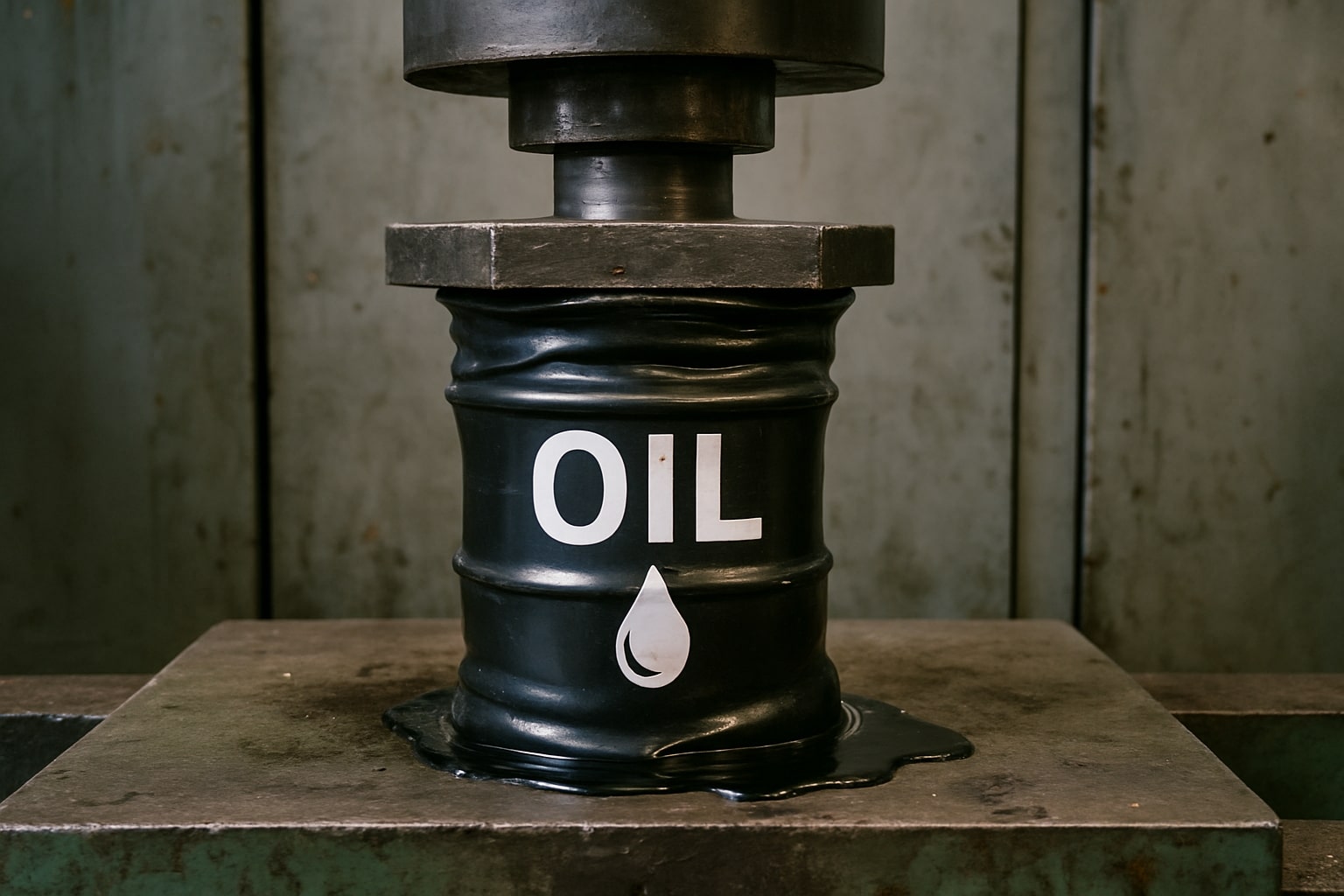The Future of Oil Prices: Will WTI and Brent See a Surge in 2025?
As 2024 closes, the oil market remains a volatile landscape influenced by geopolitical tensions, economic factors, and evolving consumer demand. West Texas Intermediate (WTI) Crude (CL=F) is trading near $70 per barrel, while Brent Crude (BZ=F) has stabilized around $73. Despite low trading volumes due to the holiday season, indicators suggest a mix of challenges and opportunities for oil prices in 2025.
Current Market Dynamics: WTI and Brent Performance
WTI and Brent prices have recently hovered at $69.95 and $72.85 per barrel, respectively, reflecting a tepid market. Demand indicators like the US economy's resilience and China's stimulus measures provided minor support. However, concerns about oversupply and the strength of the US dollar capped any significant rally. The American Petroleum Institute's (API) upcoming weekly Crude Stockpile Change report could offer further insights, with last week's drawdown of 4.7 million barrels influencing expectations.
Global Geopolitical Influences on Oil Markets
Geopolitics remains a crucial factor. Efforts to reduce Russian oil exports to Europe, combined with sanctions on Gazprombank, are reshaping global supply routes. Russia has reduced shipments to India and China, with November exports to India down 13% month-on-month. Meanwhile, Saudi Arabia has maintained strong exports to Asia, signaling a shift in regional dynamics. In the Middle East, the ongoing mediation between Israel and Hamas could stabilize regional tensions, indirectly impacting oil markets.
China's Stimulus: A Potential Catalyst
China, one of the largest oil consumers, has announced a massive $410 billion treasury bond sale to stimulate its economy. This move is expected to boost domestic consumption and infrastructure investment, increasing oil demand. However, the full impact of these measures may only become evident in early 2025, as global markets assess the scale and effectiveness of China's policies.
Shifting Indian Oil Import Trends
India, the world's third-largest oil importer, saw a 2.6% year-on-year increase in crude oil imports in November. However, its share of Russian oil imports dropped by 55%, the lowest since June 2022. Middle Eastern oil exporters filled this gap, with their share in India's crude imports rising to 48%. This diversification strategy aligns with India's broader energy security goals, potentially stabilizing its market influence.
Technological and Policy Shifts in Oil Production
The evolution of oil production technologies and policy shifts is profoundly altering global supply dynamics. In the United States, methane emissions from the Permian Basin dropped by 26% in 2024, thanks to stricter regulatory mandates and advanced emission-control technologies. These innovations not only improve environmental outcomes but also enhance operational efficiency for producers. The reduced emissions equate to a significant cost advantage, bolstering the reputation of US oil production as both economically and environmentally viable.
In Canada, oil sands producers like Suncor Energy (NYSE:SU) and Imperial Oil (NYSE:IMO) are aggressively expanding their production capabilities for 2025. Suncor aims to produce between 810,000 and 840,000 barrels per day, compared to an estimated range of 770,000 to 810,000 barrels per day in 2024. This expansion aligns with a targeted reduction in operating costs, which Suncor projects to lower its breakeven price by $10 per barrel compared to 2023 levels. The company has allocated between C$6.1 billion and C$6.3 billion in capital expenditure for 2025, with 45% directed towards economic growth investments. Similarly, Imperial Oil and Cenovus Energy (NYSE:CVE) are pursuing robust production growth plans, driven by efficiency gains and technological improvements.
Canada's oil and gas sector continues to outperform US energy stocks, with the S&P/TSX Equal Weight Oil & Gas Index delivering a year-to-date return of 17.6%, far outpacing the S&P 500 Energy Sector's 4.3% gain. These developments underscore the critical role of technology and policy in shaping competitive advantages in global oil markets.
Technical Analysis and Price Outlook
The technical landscape for crude oil reveals a mixed but cautiously optimistic outlook. West Texas Intermediate (WTI) crude oil, currently trading near $70 per barrel, faces critical resistance at $70.76 and a subsequent hurdle at $75.27. Should WTI breach these levels, the next pivotal target stands at $80, bolstered by improving demand prospects from China’s stimulus measures and a rebound in US economic activity. However, downside risks remain prominent, with support levels firmly positioned at $67.12 and $64.75. A breakdown below these levels could trigger accelerated selling, potentially revisiting the 2024 year-to-date low of $64.38.
Brent Crude (BZ=F) exhibits a parallel technical structure, with prices hovering near $73 per barrel. Resistance at $73.59 aligns closely with historical price action, while a stronger rally could target $77. If bearish pressures mount, support at $70.50 and $68 will be critical to watch. Both benchmarks are influenced by the dollar's strength, which makes oil pricier for holders of other currencies, creating potential headwinds in the near term.
Market sentiment is being shaped by ongoing developments, including China’s $410 billion stimulus initiative and the seasonal decline in trading volumes. While liquidity is thin, any unexpected macroeconomic or geopolitical shocks could drive volatility.
Conclusion: Buy, Hold, or Sell?
Investors face a delicate balance in navigating the crude oil market, with compelling bullish drivers offset by persistent risks. On the bullish side, China's massive $410 billion bond issuance is expected to fuel domestic consumption, boosting global oil demand. In the US, robust economic indicators, such as rising machinery orders and home sales, add to optimism. On the bearish side, concerns about oversupply, particularly from rising Canadian oil sands production and Middle Eastern exports, weigh on sentiment. Additionally, the strong US dollar continues to pressure oil prices by making crude more expensive for international buyers.
For WTI, any dip below $67 per barrel could present a strategic entry point, with an upside potential of 10–15% as prices aim for $75 or higher in 2025. Brent Crude offers similar opportunities, with buying zones identified near $70 per barrel and potential gains of 10–12% toward $80 if economic recovery scenarios play out as anticipated.
In the current environment, a "Hold" stance is prudent for conservative investors. However, for those with a higher risk tolerance, the opportunity to buy on dips appears promising, supported by robust fundamentals and a projected recovery in global oil demand. The interplay of these factors makes oil a compelling long-term investment, but timing remains critical to maximizing returns.

















